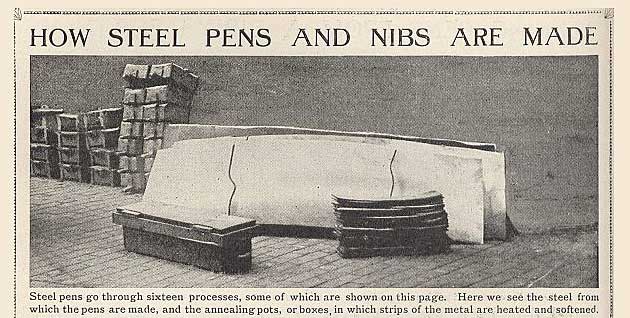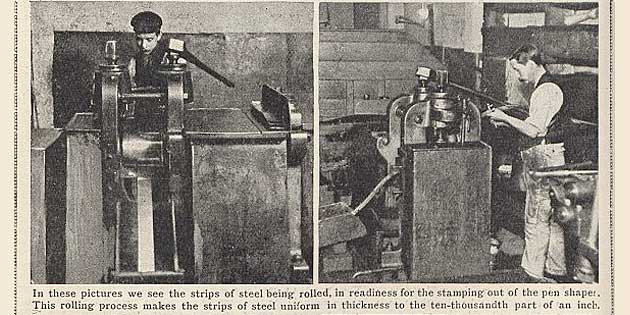|
Steel
pens go through sixteen processes, some of which are shown on this page.
Here we see the steel from which the pens are made, and the annealing
pots, or boxes, in which strips of metal are heated and softened.
In these pictures we see the strips of steel being rolled, in readiness
for the stamping out of the pen shape. This rolling process makes the
strips of steel uniform in thickness to the ten-thousandth part of an
inch.
The shapes are stamped out, heated in furnaces, and then put into vats
of oil to harden them as shown here.
Here we see the metal, and the shape stamped from it. The pen, quite ready
for use, is shown on the right.
The
photographs on this page are taken in the factory of Messrs. William Mitchell,
Ltd.
|



